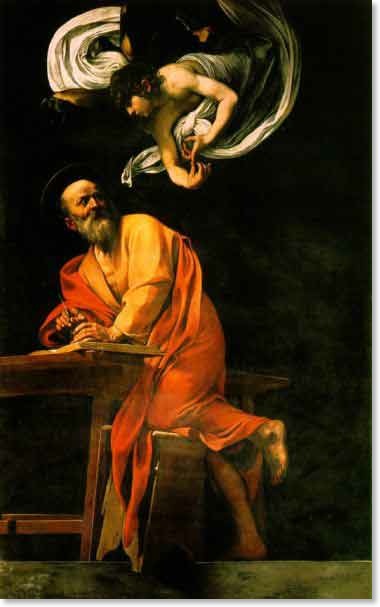Year A - The Year of Matthew

Canonically the Gospel titled “of Matthew” is placed first in the Christian scriptures. The New Testament is not compiled in order of composition. Many of Paul’s letters are canonically later in the scriptural collection, but written well before the Gospels. Hence the tradition that this is the first Gospel to have been written is not a requirement of our canonical order.
Matthew the author
The author of this Gospel appears to be like the scribe or wise teacher “who has been trained for the kingdom of heaven [and] is like the master of a household who brings out of his treasure what is new and what is old.” (Matthew 13:52). This Gospel originally had no title, but a superscript “of Matthew” was added giving it some association presumably with the Matthew named amongst Jesus’ twelve disciples.
It is most likely that this Gospel writer was familiar with the Gospel according to Mark. Mark has 664 verses – 606 of these are reproduced in Matthew. There is also strong evidence that this author used a now lost collection of sayings of Jesus – referred to by scholars as “Q” (from the German for source – quelle). This Gospel has a strong relationship with the Jewish tradition. Jesus is presented as a teacher with learners – a strongly rabbinic concept (mathetes, disciple, is used more in this gospel than any other New Testament book). The Gospel appears to have been written in the 70s or 80s.
The Gospel as lectionary
This Gospel has five blocks of teaching each with the words “when Jesus had finished” in its conclusion. Some recognise an attempt to parallel the five books of the Torah (Genesis, Exodus, Leviticus, Numbers, Deuteronomy). Michael Goulder produced a more complex theory that this Gospel is a midrashic reworking of a Jewish Sabbath lectionary. Following this theory each of the five discourses matches a major Jewish festival: Pentecost (Shavuot), New year (Rosh Hashanah), Tabernacles (Sukkot), Dedication (Hanukkah), and Passover. In this theory, for example, Pentecost, celebrating the giving of the law on Mount Sinai by Moses, is connected to the giving of the new law in the Sermon on the Mount by the new Moses – Jesus. Attempts to lie the sixty-nine units of the Codex Alexandrinus version of this Gospel alongside Jewish lectionary readings Sabbath by Sabbath for some may be an attempt too far. Should, however, this theory prove ultimately unsupportable, it serves to remind us both of the “Jewishness” of our faith, and particularly this Gospel, and of the liturgical context, present both in the origin of the Gospel, and in its current proclamation.
Image: The Inspiration of Saint Matthew (1602) Caravaggio (public domain)

